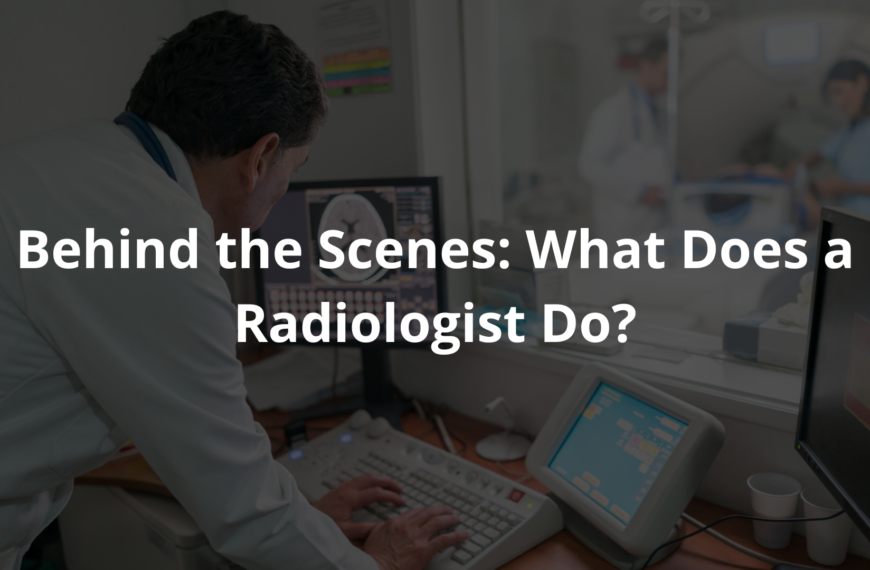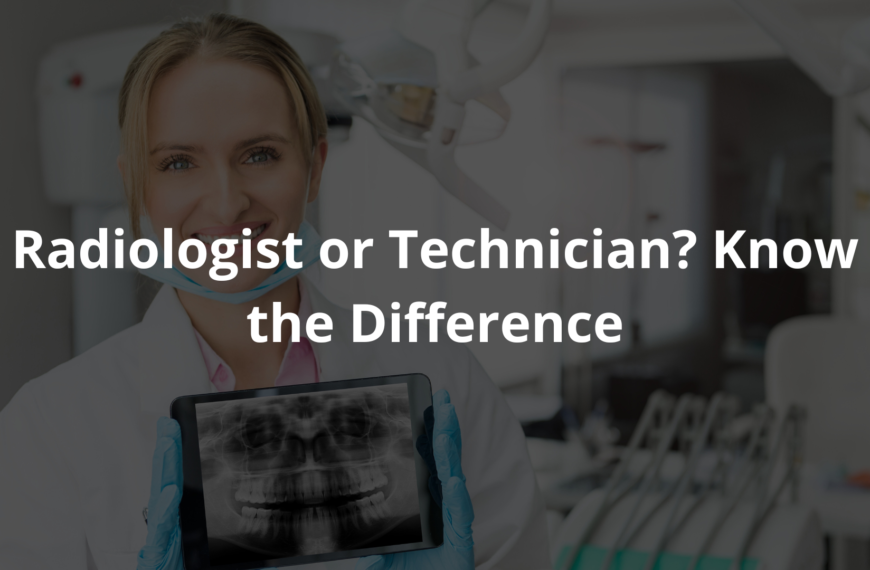Curious about how radiologists work? Discover how they use technology to take detailed images and help doctors understand what’s happening inside the body.
Radiologists are really important in medicine. They use special machines to take pictures of our insides, helping doctors figure out what’s wrong with us. For instance, they might use X-rays to show bones or MRIs to see soft tissues like organs. With their clear images and expert eyes, they help spot problems, like fractures or tumors.
They work closely with doctors to decide the best treatments for patients. Their work is like solving a mystery using technology. If you’re curious about how they find answers hidden in images, keep reading to learn more about their fascinating role in healthcare!
Key Takeaway
- Radiologists analyze medical images to help diagnose health conditions.
- They need many years of training to interpret these images accurately.
- Radiologists work closely with other doctors to create treatment plans.
Understanding the Journey of Radiology Education
Becoming a radiologist in Australia is a long but rewarding path. First, you need a bachelor’s degree, often in science, followed by a medical degree, which takes about 4-6 years. After that, there’s a 5-year radiology residency. During this time, doctors learn to read medical images like X-rays, CT scans, and MRIs.
Radiologists are sometimes called the “detectives” of medicine. They look at images to figure out what’s going on inside the body. Their work is crucial—around 80% of medical decisions rely on imaging results. They work closely with other doctors, using high-tech machines to help diagnose and treat patients(1).
It’s not an easy job. The training is tough, and the work can be intense. But helping people and solving medical puzzles makes it worth it. As more people in Australia get older, radiologists are needed more than ever. If you love science and helping others, it’s a career worth considering.
Analyzing Different Types of Images
Radiologists spend their days looking at pictures of the human body, but not the kind you’d hang on a wall. They use special machines to take images that show what’s happening inside us(2). X-rays are one of the most common tools they use. They’re fast and great for spotting things like broken bones. Think of them as a quick snapshot of what’s going on.
Then there are MRIs, which are a bit more complex. They use magnets and radio waves to create detailed images of soft tissues like the brain or muscles. It’s like comparing a simple photo to a full movie. CT scans, on the other hand, take lots of X-rays from different angles and combine them into a 3D image. This is super helpful for finding things like tumours or internal bleeding. And ultrasounds? They’re a bit different—they use sound waves to create images, often to check on babies during pregnancy.
Each type of image has its own job, like pieces of a puzzle. Radiologists have to decide which one fits best to help solve the mystery of what’s wrong. It’s a big job, but I think it must feel pretty amazing to help doctors figure things out and help patients get better.
Working with a Healthcare Team

Radiologists don’t work on their own. They’re part of a big team in healthcare, working closely with other doctors like GPs and surgeons. This teamwork matters a lot because it helps make sure patients get the right care. When a radiologist spots something unusual in an image, they share it with the rest of the team. It’s like fitting pieces of a puzzle together to see the full picture of a patient’s health.
For example, if a breast imaging test shows something concerning, the radiologist might talk to an oncologist (a cancer specialist). Together, they figure out the best treatment plan. It’s a bit like a relay race—each person does their part and passes the baton to the next, all working toward the same goal: helping the patient.
Radiologists also sometimes talk directly to patients. If someone’s worried, a calm explanation or a kind word can help ease their nerves. Trust is so important in healthcare, and clear communication helps build that trust. Everyone deserves to feel cared for and safe.
Always Learning New Skills
Medical imaging feels like it’s always on the move. New tools and methods pop up all the time, so radiologists have to keep up. It’s like they’re stuck in a never-ending school (but in a good way). They go to workshops, read studies, and attend conferences to learn what’s new. This constant learning helps them give patients the best care possible.
I went to a medical conference once and sat in on a session about updated imaging software. The radiologist presenting showed side-by-side pictures of old scans and the new ones. The difference was wild—like going from a blurry photo to one in high definition. That kind of clarity can help catch things that might’ve been missed before.
Radiologists don’t just learn, though—they teach too. They pass on what they know to students and other healthcare workers. It’s like a ripple effect, spreading better care everywhere. Staying curious and open to change is what keeps this field alive. If you’re into science and helping people, it’s a pretty cool area to explore.
Saving Lives with Accurate Interpretations
Radiologists, in a way, are like detectives for our health. They look at images—X-rays, MRIs, CT scans—and spot things that others might miss. Sometimes, what they find can save a life. Take breast cancer, for example. If it’s caught early enough, treatment can work really well. A single image can mean the difference between life and loss.
I remember hearing about a woman who went for her regular mammogram (that’s an X-ray for breasts). The radiologist noticed something that didn’t look quite right. They acted fast, and she started treatment almost straight away. Now, she’s healthy and cancer-free. That’s the kind of impact radiologists can have. It’s quiet work, but it’s powerful.
They don’t often meet the patients they help, but their role is huge. Every image they study could hold a clue—something small but important. It’s a big responsibility, and they take it seriously. If you ever get an X-ray or scan, just know there’s someone carefully looking out for you on the other side of that screen.
Team Effort in Diagnosing Conditions
Source: ND M. D.
Diagnosing health problems isn’t something one person can do alone. It’s more like a group project where everyone has a job to do. Radiologists are a big part of this team. They look at medical images (like X-rays or MRIs) and share what they find with other doctors. This teamwork helps doctors figure out the best way to treat a patient.
Let’s say someone comes to the doctor with strange symptoms. The doctor might not know what’s going on right away, so they’ll send the patient to a radiologist for imaging. The radiologist studies the pictures, looking for clues. Then, they pass that information to specialists, like a surgeon or a cancer doctor, who use it to decide what to do next.
Each person on the team has a special skill. Radiologists are experts at reading images. Surgeons know how to fix things inside the body. Together, they make sure patients get the care they need. It’s all about working together for the best results.
Using Advanced Technology
Radiologists have a pretty fascinating job. They use advanced imaging machines, like CT scanners and MRIs, to look inside our bodies. These machines are getting better all the time. Some newer ones can take super clear pictures without using too much radiation, which is safer for patients. That’s a big deal, especially for people who need lots of scans.
I remember watching a demo of a new MRI machine once. It could take detailed images in just 5 minutes. Older ones used to take 20 or even 30 minutes! Imagine how much easier that makes things for patients who might feel nervous or uncomfortable lying still for so long.
But it’s not just about the machines. Radiologists have to know how to read the images and spot problems, like broken bones or tumours. They also need to keep learning as technology changes so quickly. If you’re thinking about this career, staying curious and open to new tools is key.
Communication Is Key
Radiologists often work behind the scenes, but they still need to be good communicators. Sometimes, they talk directly to patients, explaining what the images show and what might happen next. This can help patients feel less anxious, especially if they’re worried about their health.
For example, if someone comes in for an ultrasound, the radiologist might explain what they’re checking for. They could say something like, “We’re just looking at your liver to make sure everything’s okay.” Simple explanations like this can make a big difference. Patients feel more at ease when they understand what’s going on.
Radiologists also write reports for other doctors. These reports are really important because they guide the next steps in treatment. If a radiologist spots something unusual, they need to describe it clearly so the other doctors know what to do. Good communication ensures everyone understands the findings and works together to help the patient.
So, even though radiologists spend a lot of time with machines, their words matter just as much.
Precision Matters in Their Job
Being a radiologist is a job that carries a lot of responsibility. They have to be very careful because if they misread an image, it could lead to serious problems for the patient. Every image they look at tells a story, and they have to piece it together with the patient’s history and symptoms to figure out what’s going on.
Radiologists spend years training to get this right. They learn how to spot even the tiniest details in scans—things most of us wouldn’t even notice. These details can be the difference between catching a problem early or missing it entirely. It’s a skill that takes time and patience to develop.
I reckon the pressure must be pretty intense sometimes. Their reports guide doctors on how to treat patients, so there’s not much room for error. But knowing their work can save lives? That’s got to be worth it. It’s a tough job, but an important one.
Essential Role in Public Health
Radiologists in Australia are busier than ever, especially as the population gets older. More people need their help for things like X-rays, MRIs, and CT scans. These tests are super important because they help doctors figure out what’s wrong and how to fix it. Without radiologists, it’d be a lot harder to plan the right treatments(3).
As health problems get trickier (like cancer or heart disease), radiologists are stepping up to the challenge. They work behind the scenes, looking at images and spotting things that others might miss. It’s like solving a puzzle, but one that could save lives.
Their job isn’t just about helping one patient at a time, though. Radiologists also support public health by catching issues early, which can save money and resources for everyone. So, next time you think about healthcare, don’t forget the radiologists. They’re the quiet heroes making sure people get the care they need, right when they need it.
Wrap Up: The Importance of Radiology Education
Radiology is like a puzzle, but instead of pieces, it’s images of the human body. I remember the first time I saw a CT scan—it was both confusing and fascinating. Radiologists are the ones who figure out what those images mean. They look for clues in X-rays, MRIs, and ultrasounds to help doctors treat patients. It’s not quick or easy to become one, though. It takes about 13 years of study and training after high school. That’s a long time, but their work saves lives, so it’s worth it.
Radiologists use advanced tools (like CT scanners and MRI machines) to see inside the body without surgery. They can spot things like broken bones, tumours, or even blood clots. Every image they read could change someone’s life. If you’re thinking about this career, be ready for hard work. But also know it’s a job where you can make a real difference.
FAQ
What is the role of radiologists in the healthcare system?
Radiologists play a vital role in the healthcare system. They use advanced imaging tests like MRI scans, CT scans, and PET scans to help diagnose and treat a wide range of medical conditions. Radiologists work closely with other medical doctors to interpret diagnostic images and develop treatment plans for patients.
What kind of training do radiologists have?
Radiologists are highly trained medical professionals. After completing medical school and earning a Doctor of Medicine (MD) degree, they undergo several years of specialty training in radiology. This includes a 4-year radiology residency program, where they learn to use imaging equipment and interpret medical images. Many radiologists also complete additional fellowship training in areas like nuclear medicine or radiation oncology.
Where do radiologists work?
Radiologists work in a variety of healthcare settings, including hospitals, private practices, and imaging centers. They may work full-time or split their time between different locations. Radiologists are found across Australia, including in major cities like Sydney, Melbourne, and Perth, as well as regional areas like the Gold Coast.
How do radiologists ensure patient safety?
Radiologists take great care to ensure the safety of their patients. They follow strict radiation safety protocols when performing imaging tests that use radiation, such as X-rays and CT scans. Radiologists also work closely with medical physicists to monitor and maintain the high quality of their imaging equipment. Additionally, they collaborate with radiology nurses to provide compassionate, patient-centered care.
What are some of the challenges and rewards of being a radiologist?
Being a radiologist can be a rewarding but challenging career. On the one hand, radiologists play a critical role in helping to diagnose and treat a wide range of medical conditions, including cancer and spinal cord injuries. They also have the opportunity to work with advanced imaging technologies and collaborate with other medical professionals. However, the job can also be mentally demanding, with radiologists needing to interpret complex medical images and make important decisions that affect patient care. Radiologists must also be vigilant about radiation safety and maintain a healthy work-life balance.
Conclusion
Radiologists are super important in healthcare. They look at medical images, like X-rays and MRIs, to help doctors figure out what’s wrong with patients. They go to school for a long time and work hard to learn new things. Working with a team is key to keeping patients healthy. By using fancy technology and talking well with others, they help ensure patients get good care every day. If you like medicine, becoming a radiologist might be a great choice!
References
- https://howradiologyworks.com/
- https://pmc.ncbi.nlm.nih.gov/articles/PMC6603246/
- https://pmc.ncbi.nlm.nih.gov/articles/PMC8239619/




